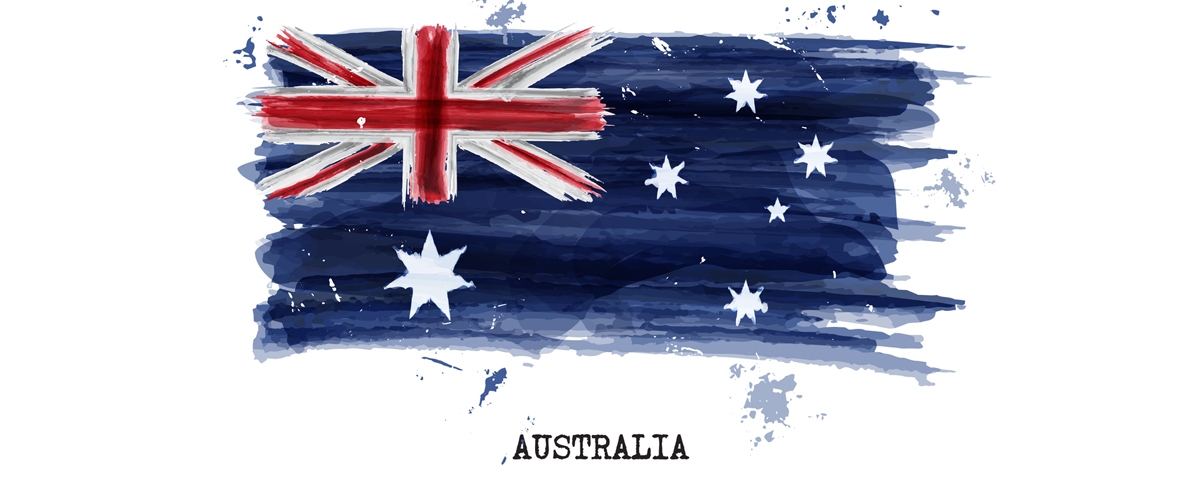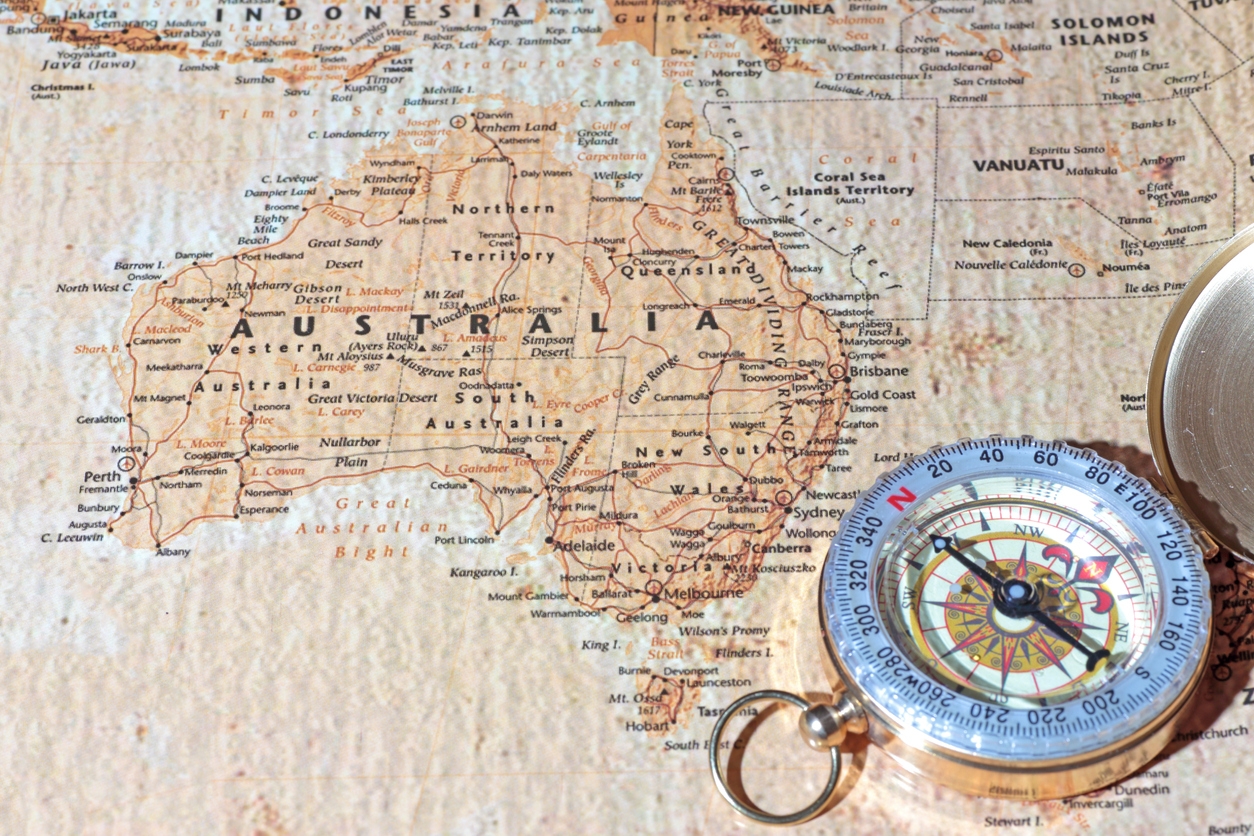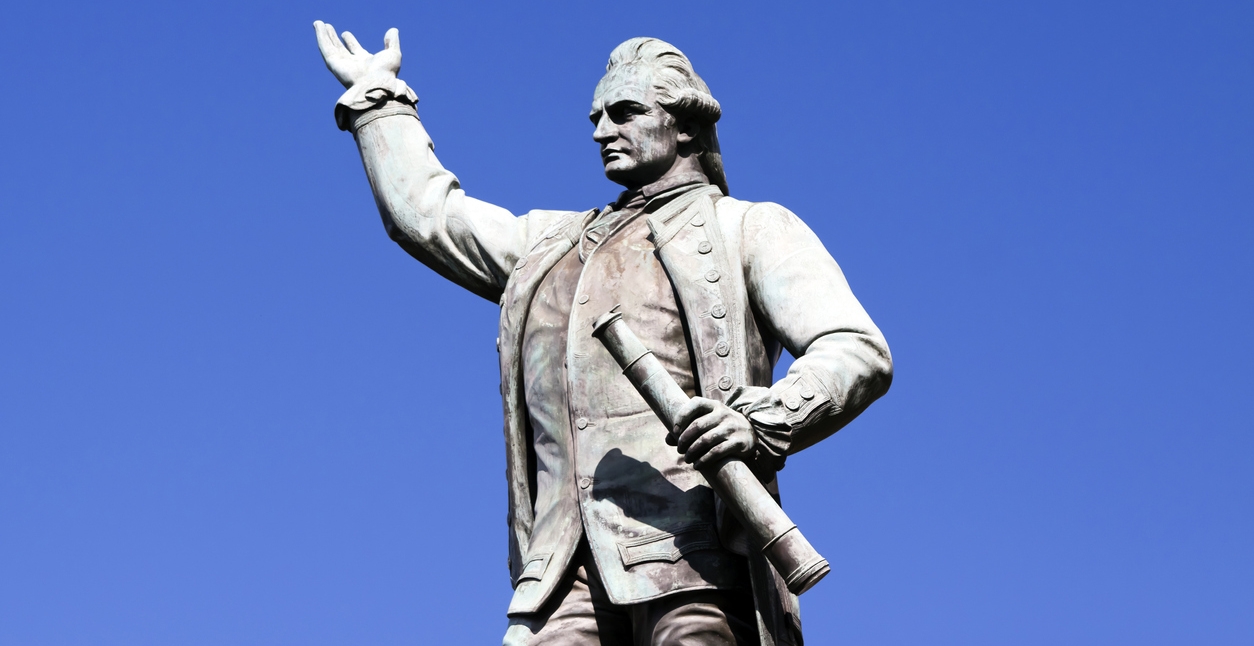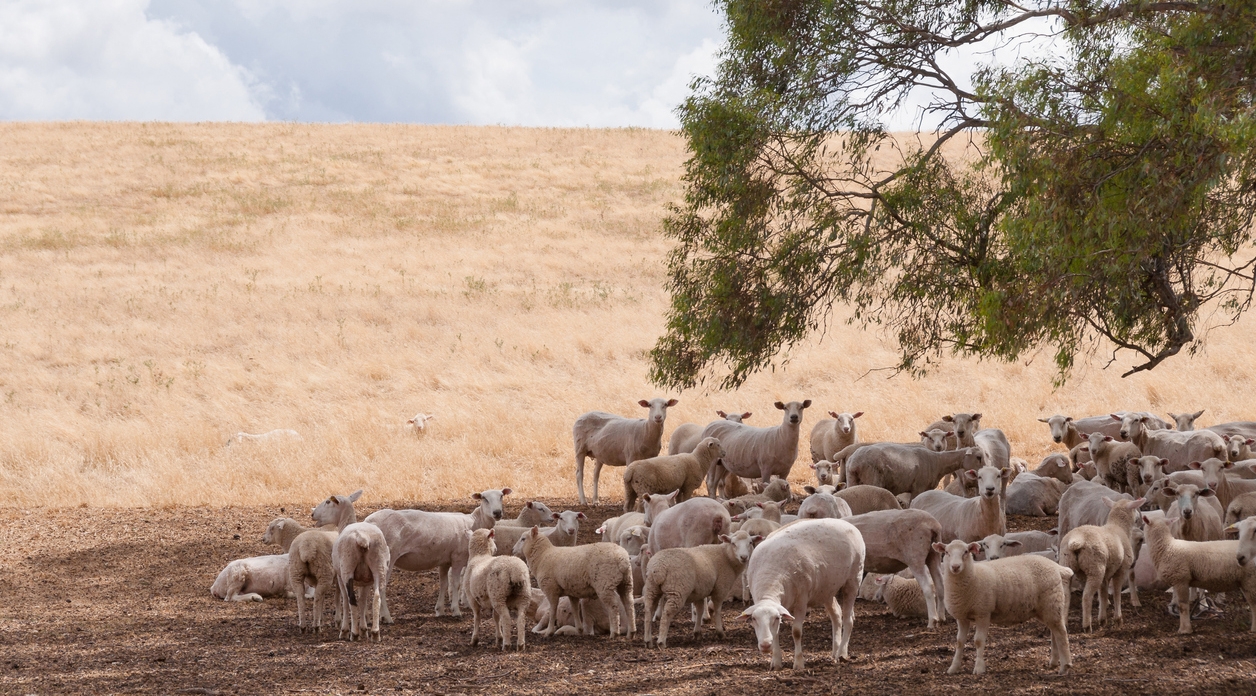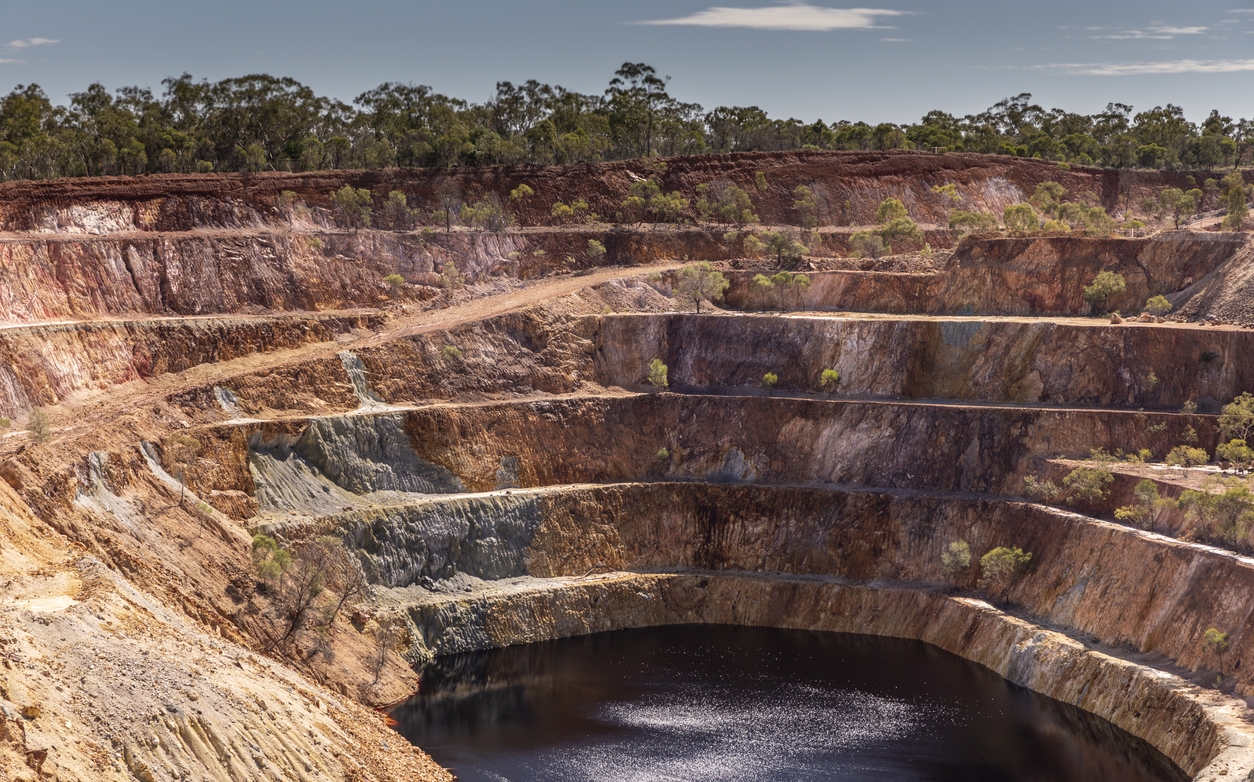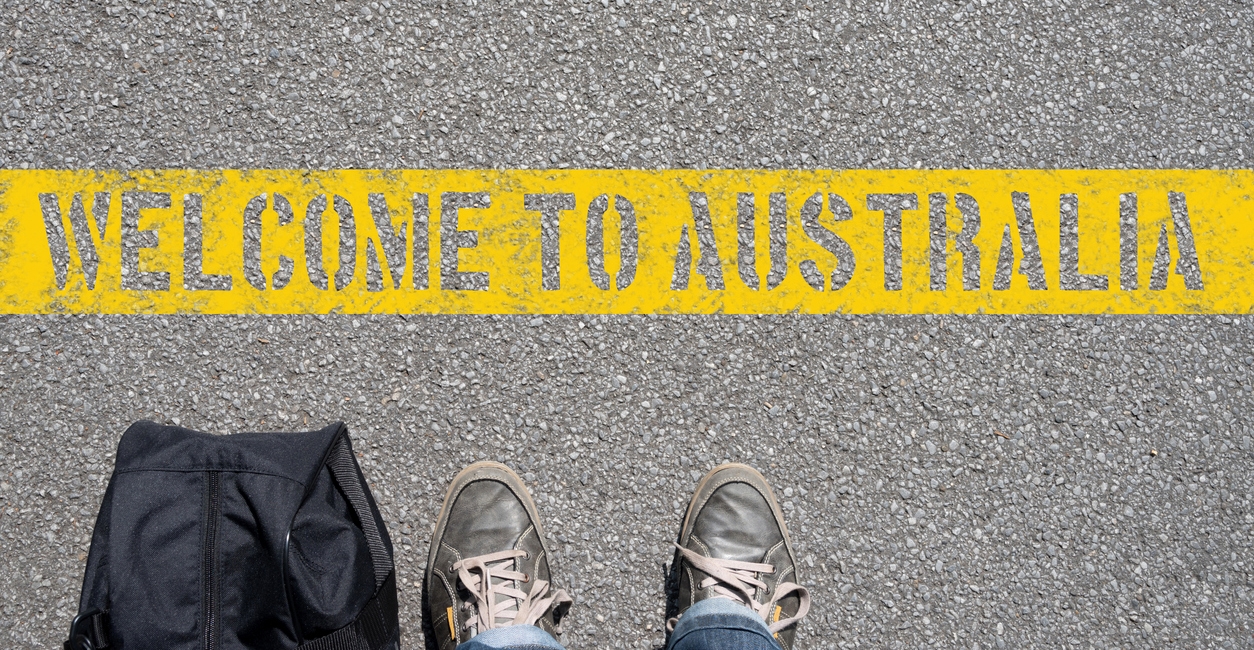Background
Australia is the smallest continent but among the largest countries in the world. It is located between the Pacific and Indian oceans in the Southern Hemisphere. Its capital is Canberra, which is in the southeast between the larger and more important economic and cultural centers of Melbourne and Sydney. It has been referred to as “the Last of Lands,” “the Oldest Continent,” and “the Last Frontier.” Those descriptions symbolize the fascination of the world with Australia. It is called the last of lands as it was the last continent apart from Antarctica that was explored by Europeans. [1]
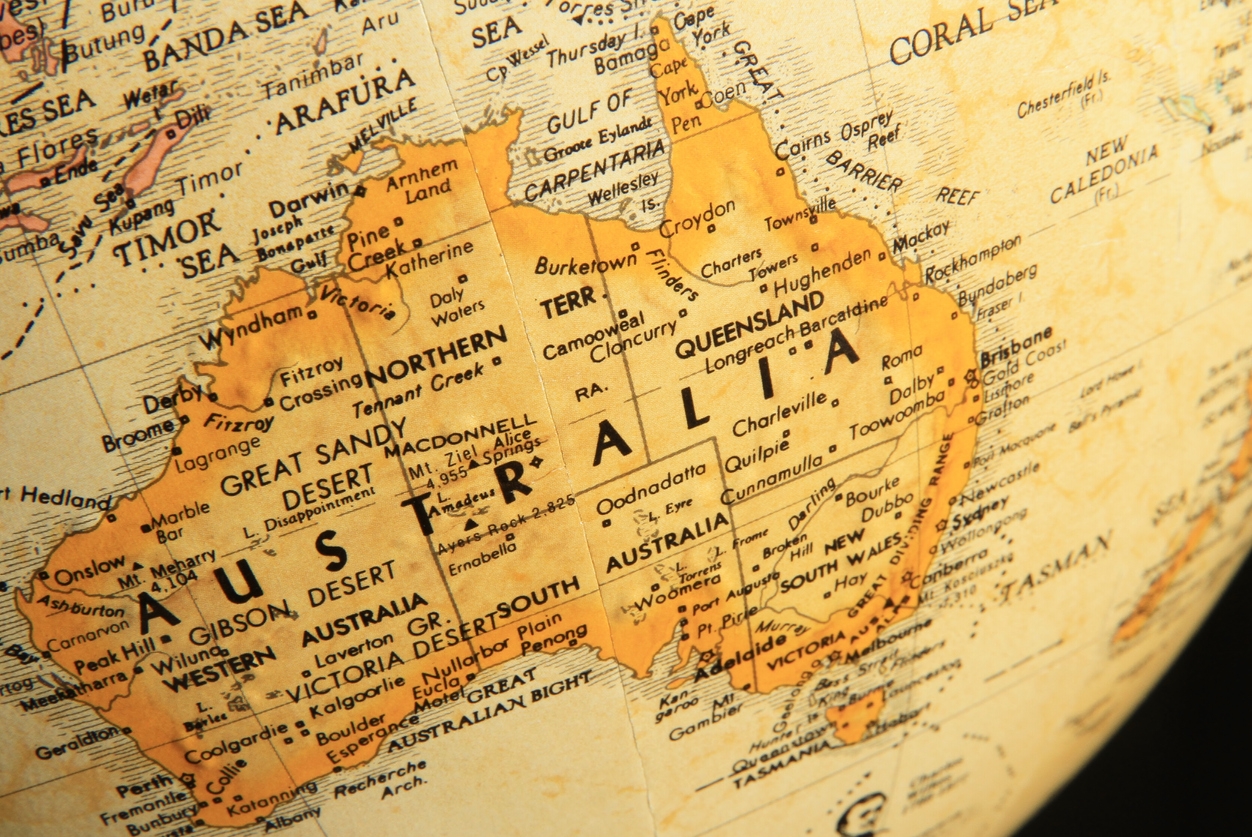
Map of Australia
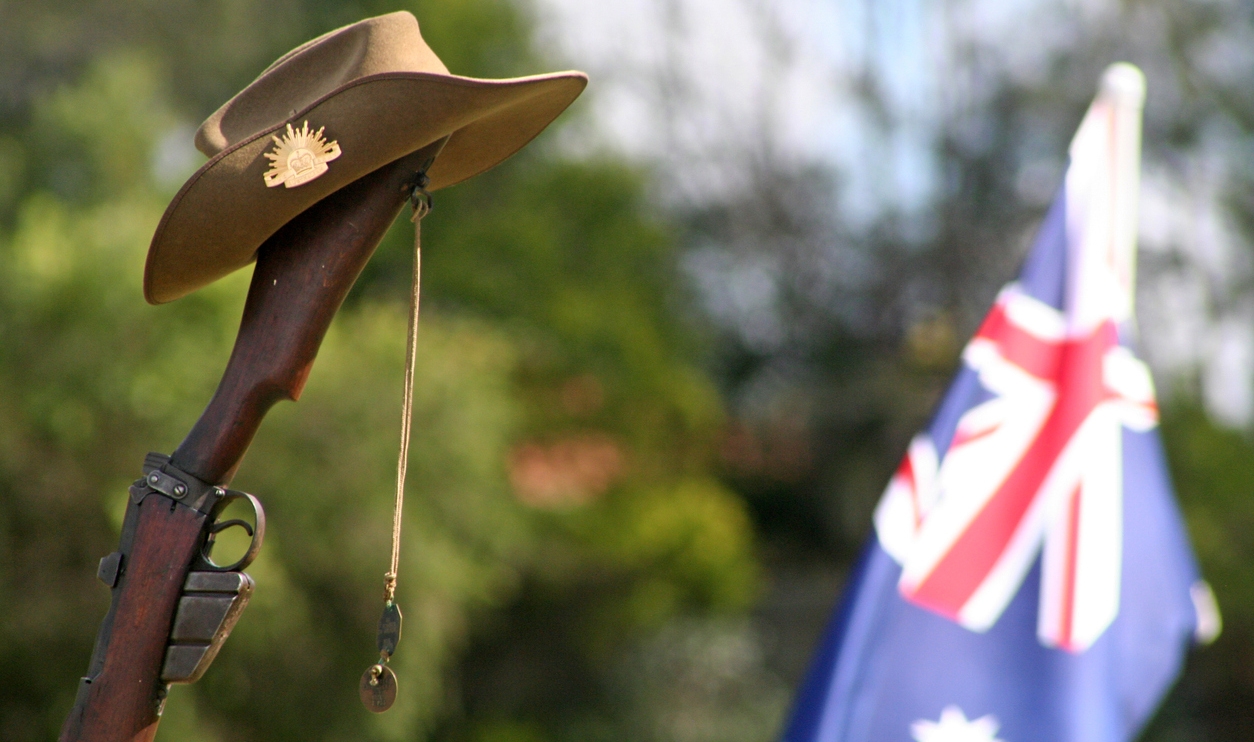
an upturned, vintage Australian Army 303 rifle with the Australian National Flag
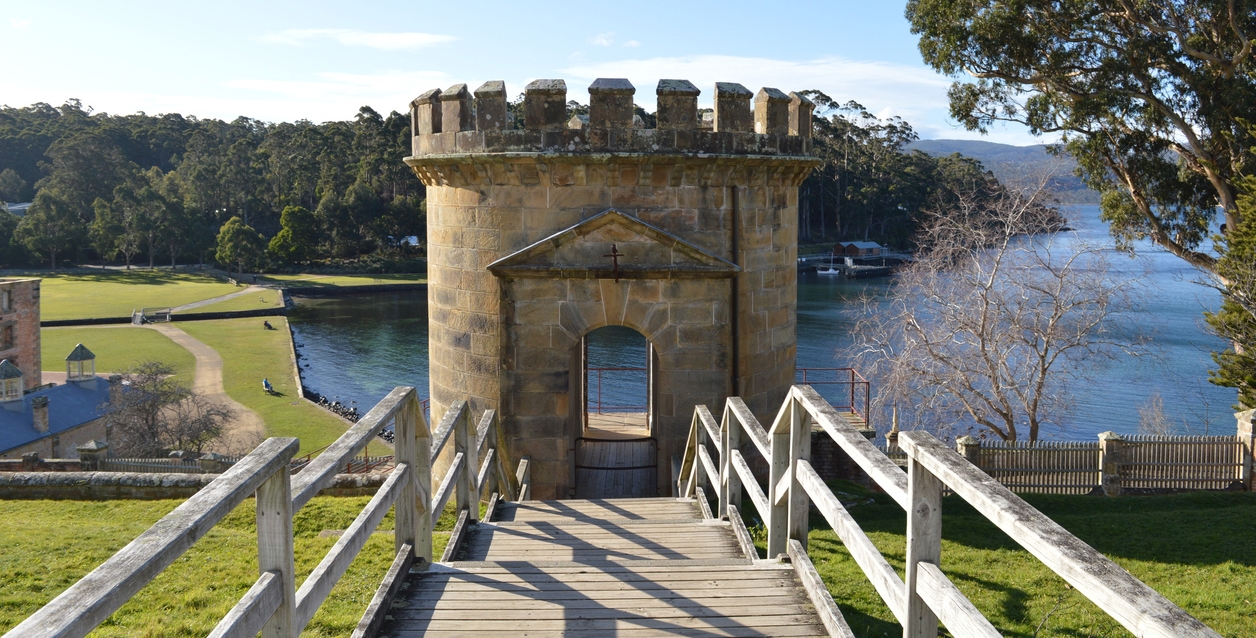
convict settlement in Australia

the Australian Parliament House in Canberra
About 60,000 years before Europeans sailed into the South Pacific, the first Aboriginal explorers had arrived from Asia. By 20,000 years ago, they had spread throughout the mainland and its chief island outlier, Tasmania. That is why when Australia was discovered by Captain Arthur Phillip of the British Royal Navy along with the First Fleet at Botany Bay in 1788, there were possibly 250,000 to 500,000 Aboriginals in the area.
Historically, Australia was part of the British Empire. Today, it is a member of the Commonwealth, and it is a relatively prosperous independent country. Before Australia became the country or continent that we know today, something had happened that contributed to its transformation. [1] If you are interested to learn more about this, read on as we’re giving you a timeline of Australia’s history.
Prehistory of Australia
The first settlers in Australia are thought to have arrived around 50,000 years ago. It was likely during a time when the sea levels were low, the land was more humid, and animals were larger. Even though much of Australia became populated, the central dry areas did not attract settlers until around 25,000 years ago. Its population grew proportionately faster around 10,000 years ago as the climate improved. [2] The original residents, who have descendants to this day, are known as aborigines.
In the 18th century, the aboriginal population was about 300,000. The aborigines, who have been described interchangeably as nomadic hunter-gatherers and fire-stick farmers, as they were known to use fire to clear the brush and attract grass-eating animals instead of cultivating the land, settled mainly in the well-watered coastal areas. According to some observers, poor treatment of the environment by aborigines over many centuries may have possibly led to the barren nature of much of the Australian interior. Higher forms of mammals never reached Australia as the land bridge from Asia ceased to exist about 50 million years ago. [3]
Australia in the 17th Century
The first documented European landing in Australia was in 1606, which was the Dutch East India Company ship “Duyfken” or Little Dove in English, which was captained by Willem Janszoon. He sailed into the Australian waters charting 186 miles of the coast on the journey. He also met with the Aboriginal people on the journey.
Willem Janszoon was the first recorded European to achieve such feats. Later in the same year, Louis Vaez de Torres sailed through the Torres Strait, which was named after himself. Both of them have been recorded as having sighted the Cape York Peninsula.
In 1642, a Dutch explorer named Abel Tasman first voyage to Australia. In 1644, he established that Australia was made up of four coasts, which are the East, West, South, and North. The state of Tasmania in Australia was named after him. [2]
European Discovery and Settlement
On August 23, 1770, the period of European discovery and settlement began. It was when Captain James Cook of the British Royal Navy took control of the eastern coast of Australia as George III. His party had spent four months exploring eastern Australia from south to north. Cook, along with Joseph Banks of the Royal Society, who escorted Cook for scientific observations, reported that the land was more fertile, unlike the Dutch explorers who believed the land of uncertain value and chose to focus on the rich Indies to the north.
The popularity of James Cook in Britain helped in fixing the attention of the British government on the area, which had strategic significance in the European wars of the late 18th and early 19th centuries.
Joseph Banks recommended Botany Bay in 1779. It was named after the profusion of new plants found there as a site for a penal settlement. A new outlet was required for convicts to be transported overseas in the perpetuation of British penal policy after the forfeiture of the 13 North American colonies. The British government decided to adopt the recommendation of Joseph Banks in 1786. The home minister, Lord Sydney, may have been influenced by considerations other than the pressing need to reduce the convict population. For example, there was some expression of interest in supplies for the Royal Navy and in the prospects for trade in the future.
In January 1788, the first fleet in the series that transported convicts arrived. It brought 1,500 people, and nearly half of them were convicts. The British flag was raised by Captain Arthur Phillip of the Royal Navy at Sydney Cove on January 26, which he decided was better for Botany Bay, to some extent to the south, as a settlement area. The New South Wales colony was officially declared on February 7, 1788. [2]
The transportation of convicts brought a total of around 160,000 detainees to Australia. The initial character of a disciplinary colony lasted for almost 60 years in the areas of the major original settlement. It ended in New South Wales in 1840, and in Van Diemen’s land or modern Tasmania, in 1852, which became a colony in 1825. Western Australia, which was founded by free immigrants in 1830, added convicts to its population by its own choice from 1850 to 1868. However, in South Australia, convicts were not sent there, and it became a colony in 1836.
The main continuing issue of the colonies was from efforts to carry out British policy designed for a penitentiary when other interests, such as farming, fishing, trade, and sealing, were developing. The economic development started in the convict phase of the settlement and included the expansion of agriculture where conditions were favorable. These were started in 1815 to export grain to New South Wales. Convict labor built roads, bridges, and other transportation facilities that were needed for commerce, as were government buildings.
In the early 19th century, merino sheep was successfully introduced by enterprising colonists as a source of fine wool, which was increasingly demanded by the British textile industry. In the 1820s, the number of individual immigrants to Australia increased in number. Most of them were people of some means with which to acquire land, which was granted only to those of substance. This land policy favored the so-called exclusives or people of established position rather than the unencumbered convicts or emancipists who pursued to advance themselves. It facilitated the pastoral expansion of the 1820s.
The already established colonies, which were New South Wales and Van Diemen’s Land, got most of the early immigrants. However, some of them went to the newer colonies, which were Western Australia and Southern Australia. The southerly area of New South Wales, which in 1851 became the colony of Victoria, was occupied by sheepmen from past north and from Van Diemen’s Land. Therefore, this part was originally settled by migration within Australia. [2]
Around Sydney in the southeast, 19 countries with 8.9 million hectares were officially selected as the lone area of settlement in New South Wales in 1829. However, sheepmen had already established stations or ranches and sheep ran beyond the official boundaries before they were so designated. They were legally trespassers on crown land and, similar to their equals in the United States who occupied land without title or certification, they became known as squatters. In 1836, squatting was legitimized after the British government recognized the impossibility of imposing the original settlement limitations.
However, squatters in Australia were, for the most part, men of substance from the middle and upper classes of British society. The term squatter did not have any invidious meaning. The truth was that squatters became the landed gentry of Australia, referred to as squattocracy, and their riches made them the most powerful economic segment of the population. The basis of their wealth was sheep, and by 1850, there were over 15 million head in Australia. But the expansion of the pastoral industry did not lead to new urban centers. It’s because the sheep stations in New South Wales only had an average of 10 to 12 people each. With this, the established seaport cities were still the main centers of population, which made comparative expansion a feature of the Australian settlement pattern during the colonial period. [2]
Australia from 1850 – 1900
The Australian colonies of Tasmania, New South Wales, South Australia, and Victoria attained self-government from 1855 to 1856. Queensland was given a constitution similar to that of New South Wales when it was separated from the latter. In 1859, it was established as a new colony. Western Australia, on the other hand, remained under the old system, owing to its small population and limited economic growth. As the new constitutions came into force, democratic political practices developed fast.
In 1851, the Australian colonies became self-governing while undergoing great changes caused by the discovery of gold. Gold, in fact, was a cause for the change in the attitude of the British government, which considered that the increasing wealth and the growing population of the colonies vindicated their supposition of political responsibility. Gold was initially found in New South Wales and in the new colony of Victoria followed. This led to the arrival of newcomers, which included skilled and professional people. Victoria formed more than one-third of the world’s gold in the 1850s. From 1852 to 1870, the export of gold value was greater than that of wool. Most of the gold from Australia was exported to Britain and was used to maintain a gold standard for the pound.
However, the most dramatic political problem also arose from the gold rushes. Diggers or miners resented tax imposition and the absence of fully representative institutions. Dissatisfaction reached a peak at Ballarat, Victoria, and in December 1854, troops and diggers clashed at the Eureka Stockade, where some were killed. This was the most famous of the few occasions in Australia’s history involving violence among Europeans. [4]
Divisions of ideology and interest were quite strong, particularly in Sydney, where a populist radicalism criticized men of wealth, notably the big landholders. The coming of self-government marked a leftward shift in the internal power balance. [4] There was also a sudden increased pressure on the land resources of New South Wales and Victoria in the 1850s. It resulted in a popular movement against squatting and squatters, which created the slogan “Unlock the Lands” to allow the formation of new wheat and dairy farms.
The colonial governments were incapable of finding a resolution for the conflict until 1856, when their newly attained constitutions gave them control of the disposition of public lands. In the 1860s, land reform laws were finally enacted. The intricate provisions of the laws proved in many cases to be of more benefit to squatters than to would-be settlers.
In the Australian colonies, the 1870s and 1880s were decades of great economic development. As railways entered the coastal ranges of the southeast and more land became accessible, farming also expanded. In addition to that, irrigation works were extended and improved, specialized machinery was invented, and there were higher yields due to improved seeds and farming methods. The capacity of investment had led to spiraling speculation by the late 1880s, particularly in Victoria, where the boom reached its highest height and where the subsequent collapse was eventually the greatest. In the 1890s, low wool prices and a severe drought brought about a depression. [3]
Australia Since 1900
The world’s desires and struggles of the early 20th century were to shape the history of the new nation, despite its physical distance from its epicenters. In some compliments, this was the least positive of the main events in the history of Australia. Nationalism became stronger, but it killed and sterilized as much as it inspired. But creativity and progress survived, and the troubles of Australia were small when compared to those of many contemporary societies. [4]
The Commonwealth of Australia, on January 1, 1901, was established. The British Parliament passed the legislature in 1900 after the approval of a draft constitution by Australian voters to enable the commonwealth to exist. The constitution proved the commonwealth, or federal government, certain distinct powers. All remaining powers were given to the governments of the six colonies, which were renamed states. The political system of Australia resembled that of the United States. In the British model, executive authority was established, with a cabinet headed by a prime minister, who is responsible to the lower house of the bicameral legislature.
In 1905, the Australian steel industry started when a blast furnace was built in New South Wales. From 1911 to 1913, the expansion of the Australian economy was followed by an increase in immigration, which totaled 200,000. Most industries were small-scale, and much of it was concerned with processing agricultural commodities.
Australia joined Britain in World War I as part of the British Empire. All volunteers of Australian forces totaled 416,809, which were from a population that did not reach 5 million until 1918. Around 330,000 served overseas in the army, flying corps units, and navy. They incurred 226,000 casualties, which included 60,000 deaths. During the war years, even when manufacturing and industrial employment were growing, unemployment was high, and the Australian economy was not prosperous.
During the Second World War, the reaction was similar to that of 1914. On September 3, Britain declared war on Germany, and Australia was automatically at war without further formality. Forces were again sent overseas, particularly in the Middle East. The Royal Australian Air Force expanded fast, and some of its units took part in the Battle of Britain in 1940. Australia was not invaded, but it was subjected to 96 attacks by air, which included serious damage to Darwin. During six years of war, around 691,400 men and women served in the armed forces of Australia. Casualties reached around 71,000, wherein over 29,000 died, and around 2,500 went missing. There were also 30,000 that were taken prisoner, and 8,000 of them died in captivity.
Australia from 1945 to the Late 20th Century
Australia maintained a restrictive immigration policy from 1945 to 1965. It favored immigrants from the British Isles and Eastern Europe over Asians. This policy was known as the White Australia Policy. It was made to preserve the racial and cultural homogeneity of the country, as well as full employment. This policy was abandoned in 1965, and Australia opened its doors to skilled Asian immigrants. However, the current immigration policy continues to block the uncontrolled influx of poor refugees and asylum seekers from countries like Iraq, Iran, Malaysia, Pakistan, and Indonesia. But the overall population of Australia is highly multicultural, with about one in four Australians having been born overseas.
In 1945, in the post-World War II era, the foreign policy of Australia became more closely associated with the United States than with Britain. Australian forces also participated in the Korean War, from 1950 to 1953, in support of the United Nations-sponsored campaign. In 1951, the country signed the Australia-New Zealand-United States Security Treaty, which committed the three nations to mutual defense.
In 1954, Australia helped in founding the Southeast Asia Treaty Organization, which was the regional equivalent of the North Atlantic Treaty Organization. From 1965 to 1971, troops from Australia were sent to Vietnam in support of the US-led intervention there. In 1990, Australia arranged three ships to support the US-led naval blockade of Iraq after the invasion of Iraq in Kuwait. After the terrorist attack on the US on September 11, 2001, Australia invoked the ANZUS treaty and dispatched troops to Afghanistan. Australia was rewarded for its firm friendship with the United States in 2005 when the two nations started to observe a bilateral free-trade agreement. [3]
The Aboriginal Australians were not allowed welfare benefits and to vote before 1959. But after 1959, things changed, and they were given welfare benefits and were allowed to vote for the first time. Aboriginal Australians were then included in the census for the first time in the history of Australia in 1971.
How Was Australia Named?
You might be wondering where the name “Australia” came from. After the Dutch navigators charted the north, west, and south coasts of Australia during the 17th century, the newly found continent was named “New Holland.”
The name that we use today was suggested by an English explorer named Matthew Flinders. He was the first to circumnavigate the continent in 1803. He used the name “Australia” to describe the continent on a hand-drawn map in 1804. In 1814, when the map and book describing his journey were published, the name “Terra Australis” was used instead. But Flinders stated that his preference was still “Australia.”
The name Australia had appeared in print earlier but only largely applied to the mythological southern land mass. The most primitive printing of this name is in an astronomical treatise that was published in 1545. With south at the top of the map, a small wind head map names the imagined southern land mass “Australia.” [5]
Conclusion
The history of Australia since the Second World War has been an up and down saga. It rose to undreamed-of prosperity in the 1950s and 1960s when the prices of wool roared, followed by unforeseen blows in the great suburban dream. At the present time, the image of Australia as a traditional, Anglo-Saxon society somehow found itself lost in Asia has been completely reorganized. However, the road towards a multicultural, middle-class, liberal Australia has been agonizing. For a small country in terms of population, there have been a lot of booms, recessions, wars, political crises, and social changes. We hope this post helped you learn more about the history of Australia.
References
[1] Powell, J. M. (2022, July 25). Australia. Encyclopædia Britannica. Retrieved August 1, 2022, from https://www.britannica.com/place/Australia
[2] Australian Explorer, E. (n.d.). Australian history. Australian Explorer. Retrieved August 1, 2022, from https://www.australianexplorer.com/australian_history.htm
[3] Kästle, K. (n.d.). History of Australia. History of Australia – Nations Online Project. Retrieved August 1, 2022, from https://www.nationsonline.org/oneworld/History/Australia-history.htm
[4] Higgins, J., Sampaolo, M., & Lotha, G. (1998, August 5). History of Australia. Encyclopædia Britannica. Retrieved August 1, 2022, from https://www.britannica.com/place/Australia/Australia-since-1900
[5] National Library of Australia, E. (n.d.). How was Australia named? National Library of Australia. Retrieved August 1, 2022, from https://www.nla.gov.au/faq/how-was-australia-named

